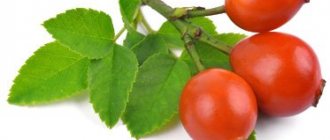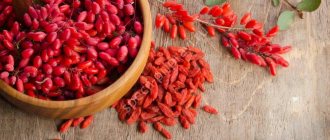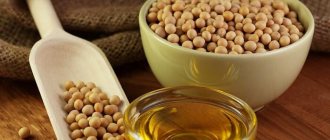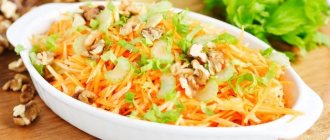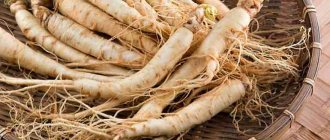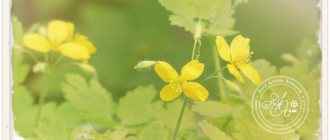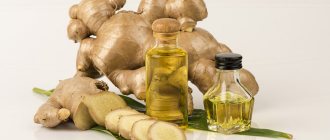Description of feijoa
The fruits grow on the feijoa tree, which has a large crown and low height - the trunk length does not exceed 4 m. Flowering depends on the place of growth:
- in the equatorial zone - all year round;
- in the Southern Hemisphere, the first buds appear at the end of the year;
- in the Northern Hemisphere - in May.
After pollination, an ovary is formed, from which a dark green, oval-shaped fruit grows. In appearance it resembles a chicken egg. The outside of the berries is covered with a dense skin of rich green color with a reddish-yellow blush.
Inside contains seeds enclosed in colorless pulp. It is translucent and in cross section resembles a four-leaf clover. The pulp is pierced by white veins through which moisture circulates.
The inner part of the fruit, depending on the variety, can be:
- oily;
- smooth;
- juicy;
- coarse-grained.
This diversity is due to the crossing of feijoa with other fruits and berries. As a result of selection, it was possible to obtain hybrids that differ in ripening speed, yield, taste and pulp.
The fruits taste like a fruit mix of pineapple, papaya, strawberries and peppermint leaves. Thanks to this unusual combination, feijoa received an alternative name - pineapple guava.
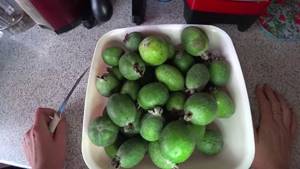
The thick peel is tart and astringent to the tongue. The pulp is juicy, but contains a large number of seeds. They are easy to chew, so they do not have a negative effect on tooth enamel. Feijoa fruits are consumed with the peel, as it is saturated with a vitamin-mineral complex. The pulp contains mainly water with vitamins dissolved in it. The peel can be removed and dried in the sun to then make tea from it.
The berries are harvested from mid to late autumn, so trees are preferred to be grown on an industrial scale in countries with temperate climates.
The berries are picked while they are still unripe because their skin remains thick enough to allow the juicy fruit to be easily transported. Before buying, you need to feel them, pressing lightly. Fruits should be elastic and soft, without any damage on the surface. You can also buy hard fruits, but they will need to be left in a place with good ventilation at a temperature of +20...+23°C. This will allow them to ripen naturally within a week.
We recommend that you familiarize yourself with Barberry Green Carpet
The quality of the berries is determined by cutting. Ripe fruits have transparent flesh, while unripe ones have white flesh. In spoiled ones, the oxidation process begins, due to which the contents become brown and then dark in color. To prevent spoilage of the product, it is stored in the refrigerator for 1-2 weeks. During this period, the fruits lose a large amount of moisture, simple carbohydrates in the pulp are concentrated, which is why the fruits become sweet. Thanks to this effect, they are used to make jam for the winter.
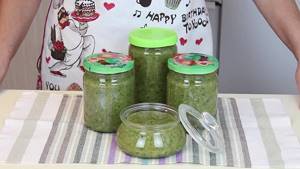
Health Benefits
Supports the Digestive System
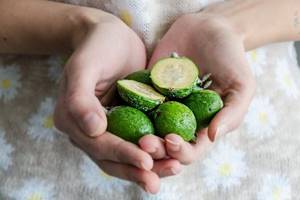
Feijoa is a good source of soluble fiber. And dietary fiber can stimulate intestinal motility and increase the secretion of gastric juice, which facilitates the digestion process and prevents constipation and flatulence. In addition, fiber can bind and remove carcinogens from the intestines, thereby preventing the development of colorectal cancer. Vitamin B6 makes this fruit an effective remedy against nausea and vomiting.
Does not increase blood sugar levels
People with type 2 diabetes can consume this fruit without any worries as it belongs to the low glycemic index food category. This means that as it breaks down in the body, it is slowly absorbed into the blood, preventing sudden changes in glucose levels in the bloodstream.
Stabilizes blood pressure
The benefits of feijoa include the ability to prevent high blood pressure. Rich in potassium and low in sodium helps relax blood vessels and ensure proper blood pressure in the body.
Reduces the risk of developing cardiac diseases
Fiber, ascorbic acid, vitamin B6 and potassium are known to be beneficial for maintaining heart health. The named substances are contained in sufficient quantities in feijoa fruits. In addition, it is important to remember that these fruits cleanse the body of excess cholesterol, which is also important for a healthy heart.
Helps fight infections
100 g of feijoa pulp contains approximately 82 percent of the recommended daily intake of vitamin C. And it is known to be a powerful natural antioxidant that helps the body resist infections and viral diseases. In addition, it has anti-carcinogenic properties, protects against free radicals, and effectively strengthens the immune system.
Antioxidant fruit
Ripe fruits contain manganese, which is an important cofactor for several enzymes necessary for energy production and the formation of antioxidant defenses. This means that some enzymes need manganese to neutralize free radicals, and feijoa fruits will help replenish its reserves.
A study conducted by American scientists showed that people who regularly consume this fruit have an almost 50 percent lower risk of dying from coronary heart disease.
Improves memory, attention and concentration
Several components of the fruit, including potassium, folic acid and various antioxidant substances, provide neurological benefits to the body. Folic acid, for example, reduces the risk of Alzheimer's disease and prevents cognitive disorders, protects against the development of dementia. Potassium is known to stimulate blood flow to the brain, activating neurons that improve concentration and cognitive abilities. And thanks to vitamin B6, feijoa will protect against depression. Researchers say that two servings of these exotic fruits per day will minimize the risk of developing depression, anxiety levels and the effects of stress.
Useful during pregnancy
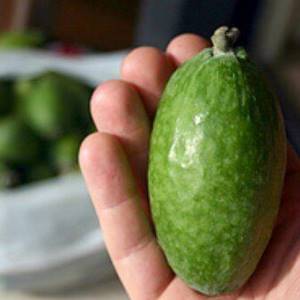
Feijoa fruits are rich in iron and folic acid, which are critical for the formation of blood cells. Both substances are simply irreplaceable for expectant mothers. Iron will prevent anemia, and folic acid will protect the child from developmental pathologies. On the other hand, fruit pulp rich in fiber will improve intestinal function, which is a “weak spot” for many pregnant women. It should also be remembered that feijoa, more than other fruits, is rich in iodine, and it is an indispensable element for the body of the expectant mother.
Feijoa is perhaps one of the most unexpected sources of iodine
Source of iodine
This mineral deserves to be discussed separately. Many are accustomed to replenishing their iodine reserves from seafood, but this fruit is also beneficial for those with iodine deficiency. Feijoa should appear in the diet of people suffering from goiter or hypothyroidism. Regular consumption of the fruit will prevent obesity, improve metabolism, reduce sensitivity to cold, and relieve fatigue and depression, which are signs of thyroid dysfunction.
Other beneficial properties of feijoa fruits:
- prevent chronic colds;
- improve the functioning of the nervous system;
- strengthen gums;
- prevent anemia;
- strengthen bones;
- accelerate the body’s recovery after injuries and illnesses;
- improve lung health;
- protect against harmful bacteria;
- activate the thyroid gland;
- accelerates wound healing;
- help fight chronic weakness.
Where does it grow?
Feijoas were found in the subtropical zone of South America, which covers parts of Brazil, Paraguay, Uruguay and northern Argentina. Because of this habitat, the trees cannot be cultivated in areas with a tropical climate. There are hybrids that are resistant to drought and high humidity; they grow in the equatorial zone and often bear fruit.
In 1890, green berries were brought to France, and 10 years later exotic plants were transported to Yalta and Sukhumi.
Then feijoa came to the state of California, where it quickly gained popularity and began to be grown on a large scale. In 1913, fruit trees were transported to Italy and Mediterranean countries. The plant has adapted well to the cold climate of the northern regions, which is why it is grown on the Crimean Peninsula, where frost reaches -11°C.
In 2020, the major suppliers of feijoa were:
- Russia, Krasnodar region;
- Georgia;
- Azerbaijan.
Fruit trees do not require careful care and large financial costs, so every amateur can grow them in their summer cottage or at home. The plant rarely reaches a height of 4 m, so it is cultivated in apartments. The trees will bear fruit and become a good decorative element thanks to their silvery leaves and exotic buds.
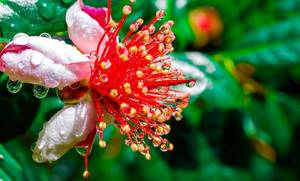
Notes
- For the convention of indicating the class of dicotyledons as a superior taxon for the group of plants described in this article, see the section “APG Systems” of the article “Dicotyledons”.
- The emphasis is given from: [slovari.yandex.ru/~books/Dictionary%20emphasis/Feijoa feijoa] // Zarva M.V.
Russian verbal stress. Dictionary. - M.: NC ENAS, 2001. - 600 p. — 6000 copies. — ISBN 5-93196-084-8. - ↑ 12
[dic.academic.ru/dic.nsf/dic_biology/6035/FEJOA Biological encyclopedic dictionary] / Ch. ed. M. S. Gilyarov; Editorial Board: A. A. Babaev et al. - 2nd ed. - M.: Sov. encyclopedia, 1986. - Feijoa
- article from the Great Soviet Encyclopedia. - [web.archive.org/web/20120125223038/www.terramedica.spb.ru/1_2010/04_Hintal.pdf Iodine deficiency and iodine deficiency diseases]
- Melkadze, R. G.
[conf.chem.asu.ru/public/conferences/3/biblio/conf-2007/sbornik_tezis-2007-kniga-II.pdf Iodine accumulation in feijoa fruits (Feijoa sellowiana Berg) in the subtropical conditions of Georgia] //
Kutaisi scientific.
Center of the National Academy of Sciences of Georgia : Abstracts of the conference. - Kutaisi, 2007. - pp. 188-191. - Blinova K. F. et al.
[herba.msu.ru/shipunov/school/books/botaniko-farmakognost_slovar1990.djvu Botanical-pharmacognostic dictionary: Reference. allowance] / Ed. K. F. Blinova, G. P. Yakovleva. - M.: Higher. school, 1990. - P. 250. - ISBN 5-06-000085-0.
Feijoa species
For the first time, Europeans encountered the Brazilian feijoa variety, brought to France by researcher Andre Edouard. He planted a tree on the Riviera. After 7 years, the first berries were collected. As a result, this variety was named Andre (in honor of its discoverer). It sells well in the US and Mediterranean countries.
We recommend that you read: What to do with blackberries for the winter
In California, breeders managed to develop 3 more varieties of exotic plants:
- Choiceana. Early ripening, with berries up to 7 cm in size.
- Superba. Unlike other species, it has a round or ovoid shape, the fruits weigh up to 85 g.
- Coolidge. Large juicy fruits with a sweet and sour taste.
In southern India, they prefer to grow the Besson variety. It bears fruit with small oval green-red berries.
Plant hybrids were bred in Russia:
- Firstborn;
- Light;
- Nikitsky is lumpy and aromatic;
- Early Crimean.
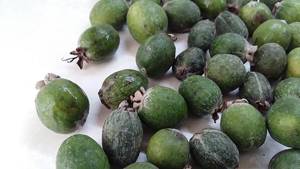
Interesting Facts
There are several interesting facts about the exotic plant:
- The scientist Berg Otto, who discovered the plant, named it in honor of Silva Feijó. In the vastness of South America, this fruit grows in Uruguay, Argentine and Brazilian regions.
- Thanks to its unusual taste, reminiscent of kiwi to some, pineapple or strawberry to others, feijoa is often used to make natural food additives or flavorings. The berries are not used as a seasoning, only for making confectionery and fresh desserts.
- Despite the fact that the fruit grows on evergreen trees, it is considered a large juicy berry.
- If you plan to eat the small green feijoa fruit raw, you need to cut it in half and scoop out the pulp with a teaspoon.
When heat treated, the fruits become too soft - before becoming familiar with the methods of preparing them, it is recommended to carefully study recipes that include these sweet and sour berries.
With the right approach, feijoa can be stuffed with fish, added vegetable juice to tender fillets, or used to make cheesecakes. The fruits impart a sweet taste to pork and go well with lamb and turkey. You can learn more about the methods of preparing feijoa from the video.
Contraindications
Feijoa berries are also unique in that in moderate doses they do not cause allergies. But a sense of proportion must be observed: excessive consumption of iodine-rich berries can lead to an overdose. But this already provokes undesirable reactions: itching, rash, digestive and nervous system disorders.
Diabetics should use feijoa with caution because these fruits have a high sucrose content. It is also important to remember that only ripe berries are suitable for food; green fruits can cause poisoning. Never drink feijoa with milk - these are absolutely incompatible products.
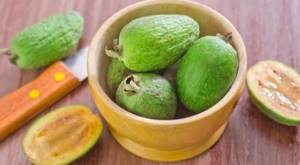
A sense of proportion is the main thing when eating feijoa
